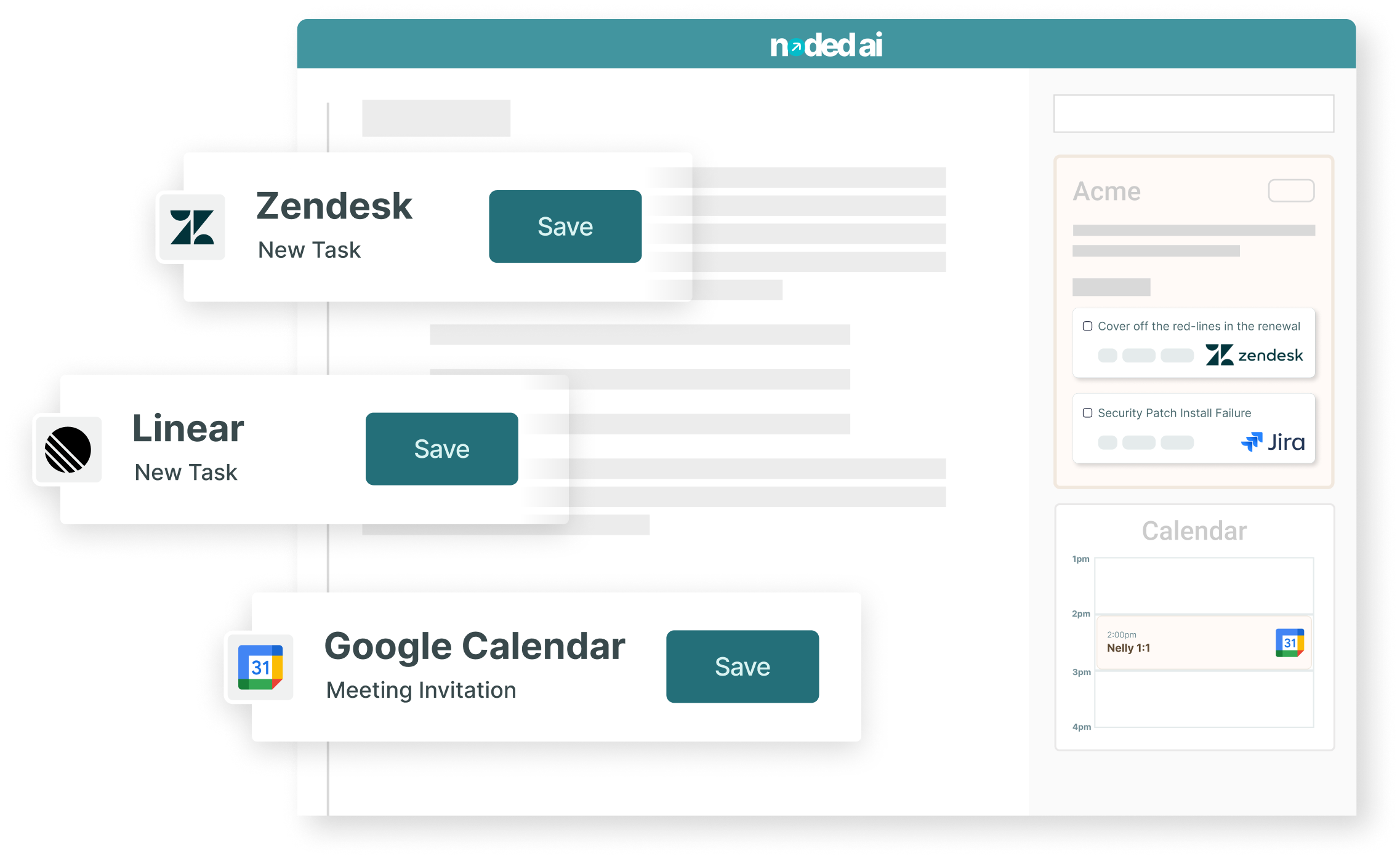How to Turn Customer Conversations Into Actionable Revenue Signals
From talk to traction: conversations that drive growth.

Customer Success leaders spend their days in the thick of customer conversations, Zoom calls, Slack threads, support tickets, emails, and quick notes. Hidden inside all of this are the earliest signs of churn risk and expansion opportunity.
But here’s the problem: most of those signals never make it past the inbox or the meeting transcript. They disappear as “dark data” and most CS teams don’t have a way to systematically capture, connect, and act on it.
This guide shows you how to make those signals actionable.

Step 1: Centralize Fragmented Insights
Every signal starts scattered. A customer frustration shows up in a Zendesk ticket. A new product use case is mentioned in a Slack thread. A renewal hesitation gets buried in an email.
To unlock their value, these fragments need to live in one place. Centralizing transcripts, notes, and messages into a single surface gives you visibility you can’t get from jumping between tools.
In our post Transforming Customer Journey Mapping, we show how connecting scattered data gives CS teams a complete view of the customer experience.

Step 2: Connect Qualitative Signals to Quantitative Outcomes
The power of unstructured data isn’t just in what it says, but in what it explains. A frustrated tone in a call often precedes declining usage. A mention of “rolling out to another department” often signals ARR expansion. But here’s the challenge: most of those signals live in the systems Customer Success teams already use, they just aren’t being connected.
- Meeting platforms (Zoom, Gong, Google Meet): Every call generates transcripts full of customer sentiment, feature requests, and hesitations. Today, those transcripts are stored in silos and rarely linked to account health.
- Collaboration tools (Slack, Teams, Email): Threads about open tickets, feature requests, or product issues get buried in channels and inboxes. By the time they’re rediscovered, the renewal conversation is already at risk.
- Support systems (Zendesk, Jira, ServiceNow): Tickets and product requests hold direct signals of risk or growth, but they rarely make their way into CS planning unless someone manually updates the CRM.
- CRMs (Salesforce, HubSpot): CRMs hold structured data like renewal dates, opportunity stages, ARR, but they miss the nuance of customer conversations. This creates a disconnect between what leadership sees and what customers are actually saying.
Because these signals are fragmented, most CS teams never connect them to structured outcomes like churn, renewal, or expansion. The result is that the “why” behind account movement is lost in the cracks between systems.
Platforms like Noded solve this by pulling unstructured inputs such as calls, notes, emails, tickets, into a single knowledge graph, then tying them back to account outcomes. This means a clipped comment in a Zoom call isn’t just “noise.” It’s an early churn flag tied directly to renewal data in Salesforce. A pattern of product requests in Slack isn’t just chatter. It’s an expansion trigger tied to future ARR growth.

Step 3: Operationalize Foresight
Once you start spotting recurring signals, the next step is to operationalize them. That means turning signals into triggers:
- A string of feature requests across accounts → expansion readiness.
- A hesitant tone on a quarterly call → early churn risk.
- Repeated roadmap discussions → long-term upsell opportunity.
With AI and knowledge graphs, these triggers can be surfaced automatically, allowing CS teams to act before risk or opportunity shows up in ARR.
Silverfort, one of our customers, used this approach to anticipate renewal risks weeks earlier and identify upsell opportunities faster. Read the full story in our Silverfort case study.

The Strategic Edge Ahead
Unstructured data is no longer “too messy” to be useful. It’s the hidden layer of foresight that gives Customer Success teams the ability to both protect revenue and accelerate it.
Leaders who capture these signals aren’t just managing accounts, they’re shaping company strategy. And that’s the next frontier of Customer Success.
✅ Ready to see how unstructured data can become your growth engine? Sign up for Noded AI and start turning conversations into actionable signals today.




